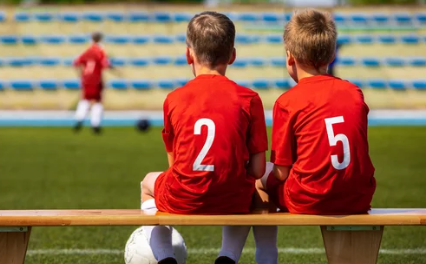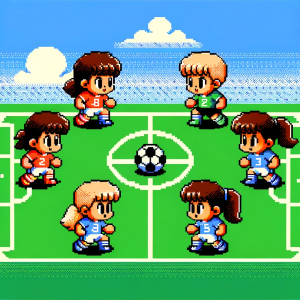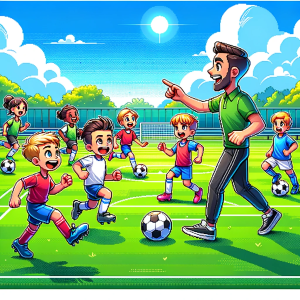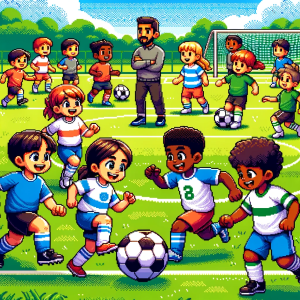
Leveling the Playing Field in Soccer
Bridging the Training Gap Between Starters and Non-Starters
Imagine you’re the coach of a professional soccer team. Every week, your starters give their all, running up and down the field for 90 minutes, pushing their bodies to the limit. Meanwhile, your non-starters—those players who spend most of the game on the bench—are eager for their chance to shine. But here’s the catch: while your starters are getting the rigorous match experience they need, your non-starters might not be getting the same level of physical exertion. And that, it turns out, could be a problem.
A recent study sheds light on an often-overlooked aspect of soccer training: the workload disparity between starting and non-starting players. The findings could have profound implications for how teams train, manage player development, and ultimately perform on the field.
The Hidden Disparity in Soccer Training
Professional soccer is a physically demanding sport, requiring players to run an average of 10 to 13 kilometers per match, with significant portions of that distance covered at high intensity. Starters, those players who begin the match and typically play the most minutes, are subjected to this grueling pace week in and week out. This not only helps them maintain peak fitness levels but also conditions their bodies to handle the stress and strain of high-intensity match play.
But what about the non-starters? According to the study, non-starters experience significantly lower workloads both in training and in match play compared to their starting counterparts. This imbalance, if not addressed, could lead to a variety of issues—from decreased physical preparedness to a higher risk of injury when non-starters are suddenly thrust into the starting lineup.
Why This Matters: The Real-World Impact on Player Development
The gap in training loads between starters and non-starters isn’t just a minor inconvenience; it’s a potential roadblock to team success. Here’s why:
- Injury Risk: Starters are conditioned through regular match play to handle the physical demands of soccer, while non-starters may not be as prepared. When a non-starter is suddenly required to play extended minutes, their risk of injury increases because their bodies are not accustomed to the same level of stress.
- Reduced Performance: Non-starters who don’t receive adequate training loads may not perform at their best when called upon. Their lack of match-specific conditioning could result in lower endurance, slower recovery times, and reduced effectiveness on the field.
- Team Cohesion: A team is only as strong as its weakest link. If non-starters aren’t able to seamlessly integrate into the starting lineup when needed, the entire team’s performance could suffer.
How Can Coaches Address This?
The study provides some practical recommendations for bridging this gap, offering strategies that coaches can implement to ensure that all players, whether they start or not, are adequately prepared.
1. Supplementary Running Sessions
One of the key findings of the study is that non-starters benefit from additional running-based training sessions, especially on match days and the day after (known as Match Day +1 or MD+1). These sessions should focus on replicating the intensity and duration of match play, targeting specific metrics like total distance covered, the number of sprints, and time spent in high-intensity heart rate zones.
For example, while starters might spend 30 minutes in high-intensity heart rate zones during a match, non-starters can only achieve similar conditioning through carefully designed supplementary sessions. This can include interval training that mimics the stop-and-go nature of soccer, with sprints followed by short recovery periods.
2. Modifying Small-Sided Games (SSGs)
Small-Sided Games (SSGs) are a common training tool used to replicate match conditions in a controlled environment. However, the study suggests that SSGs, as traditionally practiced, may not be sufficient to make up for the load discrepancies between starters and non-starters. This is largely due to the smaller pitch size and shorter duration of SSGs compared to actual matches.
To counteract this, coaches can adjust the format of SSGs by increasing pitch size, extending the duration of play, and incorporating more high-intensity activities such as sprints and accelerations. The goal is to ensure that non-starters are exposed to a workload that closely mirrors what they would experience in a full match.
3. Incorporating Additional Training Matches
Another effective strategy is to arrange additional training matches, either within the team or against other squads, to give non-starters more game-like experience. These matches don’t need to be full 90-minute affairs but should be long enough to provide a significant conditioning effect.
The Bigger Picture: Ensuring Fairness in Training
In professional sports, the margin between victory and defeat is often razor-thin. Ensuring that every player on your roster is prepared, both physically and mentally, can make all the difference. By addressing the workload imbalance between starters and non-starters, coaches can build a more resilient, cohesive, and successful team.
The findings from this study should serve as a wake-up call to coaches at all levels of the sport. It’s not enough to focus solely on the players who start the match; the development of the entire squad is crucial. By implementing these recommendations, coaches can help ensure that every player is ready to contribute when it matters most.
Final Thoughts: A Question of Fairness and Strategy
As you reflect on this, consider the following questions:
- How can coaches at all levels of soccer better balance the workloads between starters and non-starters?
- In what ways might this research change your approach to training and player development?
These are not just academic questions; they are practical considerations that could reshape the future of soccer training. After all, when it comes to team sports, every player counts.
Are you ready to delve deeper into the science and strategy of soccer?
This Week in Soccer offers you a unique blend of expert analysis, engaging infographics, and practical insights. Subscribe to our newsletter and stay ahead of the game with the latest in soccer analytics and coaching strategies. Make the move from spectator to strategist. Subscribe now!



